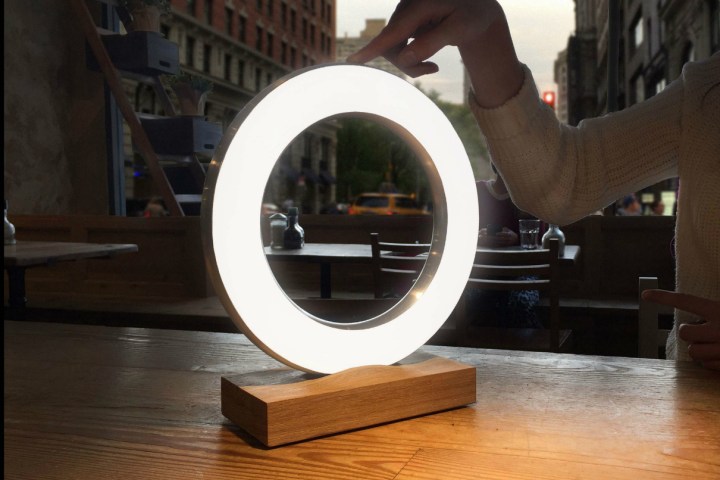
Halos consists of two parts, the ring-shaped lamp itself and a wooden dock. The lamp frame is made from aluminum and the glass surface is coated with an epoxy resin. According to Halos designer Axel Delbrayère, the resin “reproduces the effect of thousands of mini-suction cups that grip on tight to non-porous surfaces, such as windows and mirrors.“ In theory, and in the demonstration video, the lamp sticks to smooth, vertical glassy surfaces such as a mirrored wall or window, although the company recommends caution when mounting it and does not guarantee the grip.
The light works bi-directionally, so you can face one direction for ambiance or turn it around for task or room lighting. The LED light level can be adjusted by touch to a maximum of 500 lumens, enough for an office or library light. The company plans to include smartphone brightness and timing controls, although including the app with the initial version of the lamp depends on meeting a Kickstarter stretch goal. Depending on the brightness setting, the Halos’ lithium-ion battery will last 2 to 4 hours per charge.
The wooden dock has two functions. The dock serves as a base for the lamp when you don’t want to stick it on a vertical surface. It also recharges the lamp’s battery — its own internal battery holds one full charge so you can theoretically get from 4 to 8 hours of lighting without plugging anything in.
Halos’ retail price will be 350 euros, or about $380 when the product ships, which is currently scheduled for April 2017. There are still limited Super Early Bird (about $199) and Early Bird (about $272) specials on the Kickstarter campaign.
Editors' Recommendations
- Check out these Ring video doorbell alternatives that don’t require a subscription
- 8 things you didn’t know smart lights could do
- The stylish Google smart lamp that you’ll (probably) never own
- Does that appliance need an app? I don’t think so
- Don’t toss out your old smart home tech! Regift it




